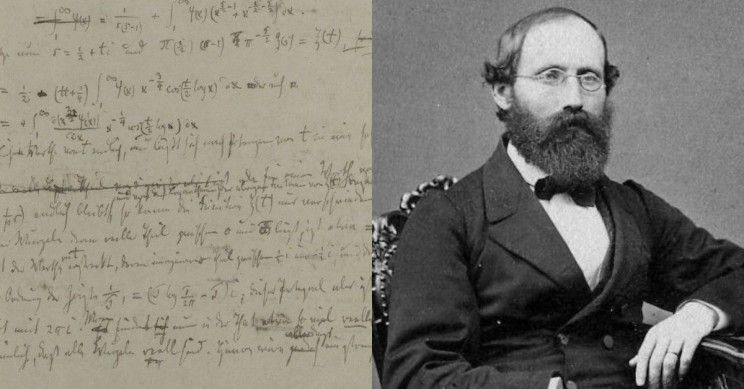Riemann’s Hypothesis

[Editor: This is the second post in a series about the Millenium Problems. This post is about the Riemann Hypothesis, probably the single most fascinating unsolved problem in all of mathematics. This hypothesis was first proposed by the mathematician Bernhard Riemann. Georg Friedrich Bernhard Riemann (September 17, 1826 – July 20, 1866) was an influential German mathematician who made lasting contributions to analysis and differential geometry, some of them enabling the later development of general relativity.]

The real part (red) and imaginary part (blue) of the Riemann zeta function along the critical line Re(s) = 1/2. The first non-trivial zeros can be seen at Im(s) = ±14.135, ±21.022 and ±25.011.
It all started with Leonard Euler who in 1740 considered the function $$zeta(s)$$ (the zeta function) given by the series,
$$zeta(s)=1+frac{1}{2^s}+frac{1}{3^s}+ldots$$
For $$s=1$$, the series diverges and for $$s>1$$ it converges to give a function called Euler’s zeta function. The importance of this function in number theory became apparent when Euler proved,
$$zeta(s)=((1$$–$$2^{-s})^{-1}(1$$–$$3^{-s})^{-1}(1$$–$$5^{-s})^{-1}ldots$$
where the product involved all the factors of the form $$(1$$–$$p^{-s})^{-1}$$ for every prime $$p$$. This gives an interesting proof that there are infinite number of primes, because otherwise $$zeta(1)$$ would have been finite.
The connection of zeta function to number theory became more significant when Riemann extended the definition of the function to the whole complex s-plane except $$s=1$$, where it has a simple pole, by first using the fact that the series converges for $$Re(s)>1$$, giving an analytic function in this region and then by using analytic continuation. The extended function is called Riemann’s zeta function. It was found to have zeros at – 2, -4, -6, … and these were all the real zeros. Riemann also found that the function must have an infinite number of non-real zeros. Riemann conjectured that all these zeros are of the form $$frac{1}{2}+ bi$$ i.e. that all these complex zeros lie on the line $$Re(z)=frac{1}{2}$$ , called the critical line. In 1859 he used the zeta function to investigate the pattern of primes. He hoped that the proof of his conjecture would lead to the proof of a conjecture made by Gauss that the number of primes below any positive integer n is approximately n/ log n and that the approximation becomes better and better as n approaches infinity. However later Hadamard and de la Valle Poussin proved Gauss’s conjecture which came to be known as the Prime Number Theorem, by exploiting the connection between the primes and Riemann’s zeta function without the need of proving Riemann’s conjecture (which is now known as Riemann’s hypothesis). Still if Riemann’s hypothesis is proved it will lead to many other significant results in analytic number theory.

